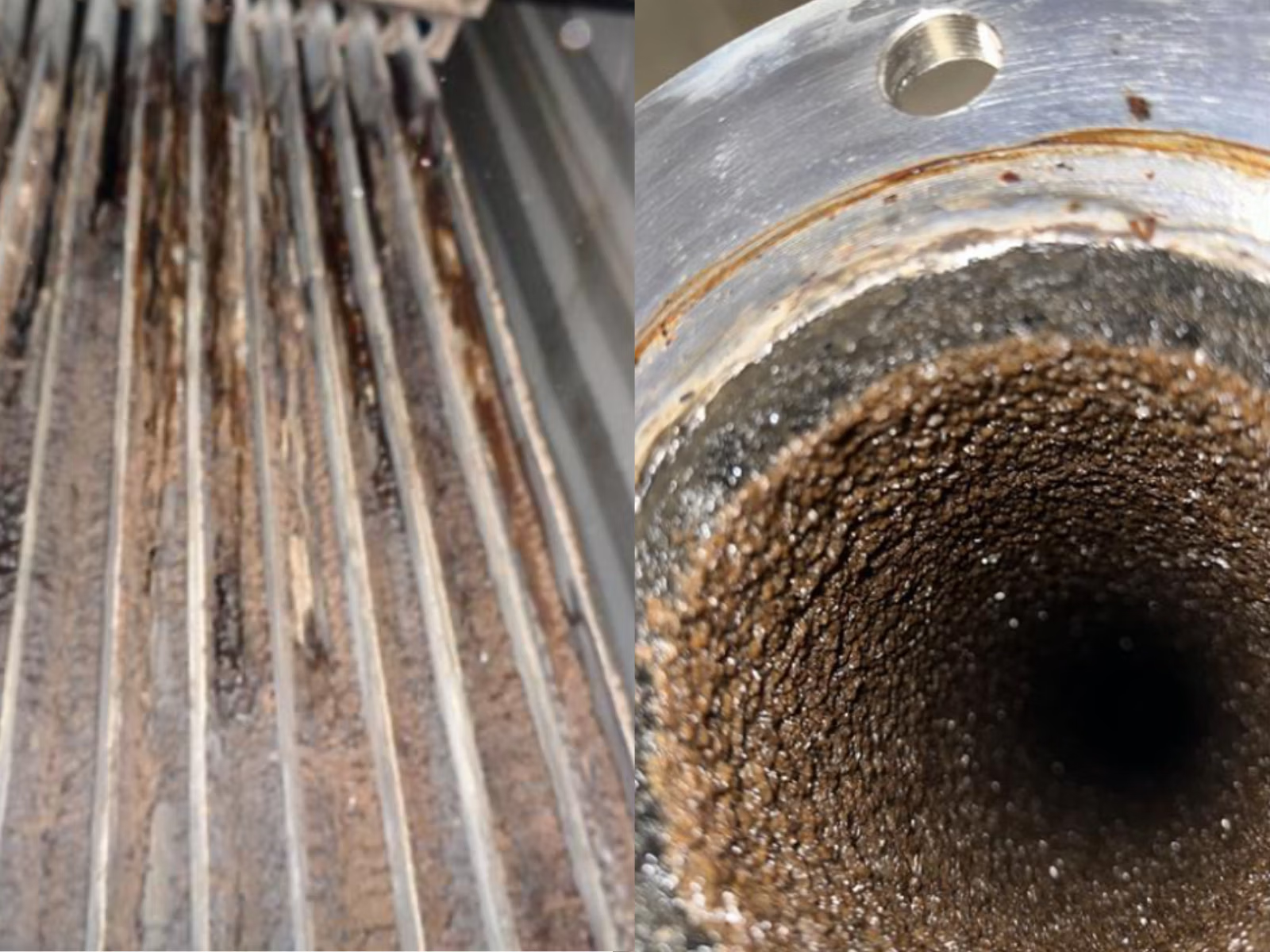The fouling factor is a critical parameter in thermal engineering that quantifies the thermal resistance caused by deposit buildup on heat transfer surfaces. Understanding this concept is essential for maintaining optimal performance in industrial heat transfer equipment and ensuring efficient system operation.
What is a Fouling Factor?
The fouling factor represents the additional thermal resistance that develops over time due to the accumulation of deposits, corrosion products, or biological growth on heat transfer surfaces. This parameter is particularly crucial when designing and operating heat exchanger systems, as it directly impacts overall thermal performance and energy efficiency.
Fouling Factor Formula
The fouling factor is calculated using the following formula:
Rf = 1/Udirty – 1/Uclean
Where:
- Rf = fouling factor (m²·K/W)
- Udirty = overall heat transfer coefficient with fouling
- Uclean = overall heat transfer coefficient without fouling
This formula helps engineers determine how much thermal performance has degraded due to fouling accumulation.
Understanding Fouling Resistance
Fouling resistance is directly related to the fouling factor and represents the thermal barrier created by deposits on heat transfer surfaces. As fouling resistance increases, the fouling rate (the speed at which deposits accumulate over time) accelerates, leading to decreased heat transfer efficiency and higher operational costs.
Fouling Factor Applications
In industrial equipment design, engineers must account for expected fouling to ensure adequate performance throughout the equipment’s operational life. Different applications require specific fouling factor considerations:
Heat Exchangers
Fouling factor considerations are most critical in heat exchangers since their primary function is heat transfer. Shell-and-tube heat exchangers typically experience fouling factors ranging from 0.0001 to 0.002 m²·K/W, depending on the fluid properties and operating conditions. Regular monitoring of the heat exchanger fouling factor helps optimize maintenance schedules and prevent excessive performance degradation.
Importantly, expected fouling factors directly influence heat exchanger sizing during the design phase. Engineers must often oversize heat exchangers to compensate for the reduced heat transfer efficiency that will occur as fouling develops over time. This design margin ensures the equipment can still meet thermal performance requirements even when operating with fouled surfaces, though it results in higher initial capital costs.
Evaporators
Similar to heat exchangers, evaporators rely heavily on efficient heat transfer for proper operation. Fouling in evaporators can dramatically reduce heat transfer coefficients, leading to decreased evaporation rates and higher energy consumption. The fouling factor becomes particularly important in applications like desalination plants and chemical processing, including black liquor evaporation in pulp mills, where consistent thermal performance is crucial.
Pipes and Piping Systems
While heat transfer is not the primary concern in most piping systems, fouling still creates significant operational challenges. Rather than fouling factor calculations, engineers focus on how deposit buildup affects flow characteristics, pressure drops, and pumping requirements. Scale formation and biofilm growth can reduce effective pipe diameter, increasing friction losses and energy consumption for fluid transport.
Pumps and Valves
In pumps and valves, fouling considerations extend beyond heat transfer to include mechanical effects. Deposit accumulation can cause wear, reduce efficiency, and lead to operational failures. While these components may have cooling systems where fouling factors apply, the primary concerns involve keeping blockages away, preventing equipment breakdown, and ensuring reliable flow control.
Practical Fouling Factor Management
Effective fouling factor management involves:
- Regular monitoring of thermal performance indicators
- Preventive maintenance scheduling based on fouling rate data
- Chemical treatment programs to minimize deposit formation
- Design margins that account for expected fouling over time
Ultrasonic Fouling Prevention with Altum Technologies
Advanced ultrasonic technology offers an innovative approach to fouling factor control. Altum’s ultrasound systems generate high-frequency vibrations that prevent deposits from adhering and break down existing fouling layers on heat transfer surfaces. This non-invasive CIP technology significantly reduces fouling rates in heat exchangers, pipes, and other critical equipment, helping maintain lower fouling factors throughout operational lifecycles while reducing chemical treatment requirements and maintenance frequency.
If efficient fouling prevention is adopted from the very start and taken into account in calculations, the estimated fouling factor is also smaller, and the equipment doesn’t need to be oversized to function properly.
Conclusion
The fouling factor is a fundamental parameter for optimizing heat transfer equipment performance. By understanding fouling resistance relationships and implementing proper monitoring strategies, engineers can maintain efficient operations while minimizing energy consumption and maintenance costs. Regular assessment of fouling factors ensures heat exchangers, pipes, pumps, and valves operate at peak efficiency throughout their service life.
Beyond monitoring and maintenance, proactive fouling prevention technologies offer significant advantages in managing fouling factors. Modern solutions like ultrasonic systems can dramatically reduce fouling accumulation, helping maintain design performance levels and extending equipment life. Proper fouling factor consideration during design and operation phases, combined with effective prevention strategies, is essential for achieving long-term thermal performance goals and reducing total cost of ownership.
Want to learn more about using ultrasound to combat fouling? Contact our experts to learn more about how it could benefit your process.
Don’t forget to follow us on LinkedIn to catch our future insights and news.

